As promised in the Plutonium Muffins Podcast Episode Four, here’s a bit of extra information on the Navajo-Churro sheep for you! I hope you enjoy it – if there’s anything extra that you would like, or you have any questions, do let me know.
The Navajo-Churro
The Navajo-Churro are the modern descendants of a cross-breed between Jacob Sheep and Churra, an ancient Iberian breed. They were brought to North America with the original settlers in the 16th Century and were adopted by the Navajo as an important element of economy and culture shortly after this.
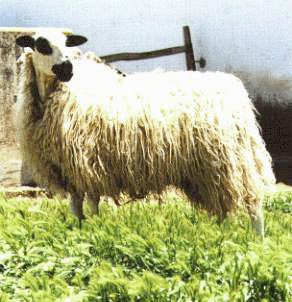
The Navajo were extraordinarily good weavers, and the wool came in highly useful for the makers. Weaving reproduction rugs is a popular pastime at the moment, and a search for them comes up with a wonderful range of examples. The below is an example of a rug that was woven around 100 years ago.
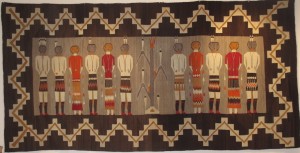
The sheep are considered threatened in conservation terms, and are considered a sheep of the United States of America. They have been protected since the 1970’s, and there are a number of projects which I have managed to find in which the focus is preserving the breed.
Navajo-Churro rams have been blessed with the ability to have two, four or even six horns! This comes from their Jacob ancestry, and makes them one of very few breeds of sheep in the world that can have this number of horns. Females can be horned or have nubs of horn which are termed scurrs instead.
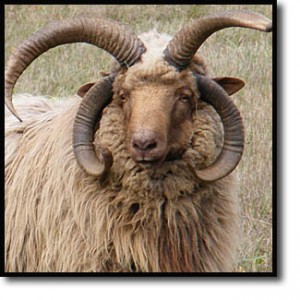
These sheep are primarily bred for their fleece. They are dual-coated, with a soft, short undercoat and a long, coarse outer coat. The yarns which can be spun from this fibre is different depending on what you spin; the undercoat makes soft, warm yarn and the outer coat produces a stronger and more coarse yarn.
The sheep come in a bewildering array of colours! They are seriously good-looking sheep, with anything from reds to browns, blacks to whites, in-between colours, mixtures of these, different colours on their points (legs and head) and hips…check out this flock!
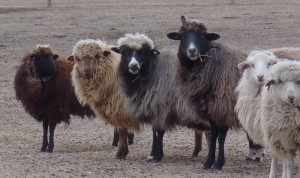
I would love to try this fleece, and have found a few sources online:
bide a wee farm – online shop here. Unfortunately, there are no fleeces currently in stock, and I cannot see any information on when it will be available again – but if you are interested, keep an eye out!
Arriola Sunshine Farm – I suspect you have to contact them directly as they do not have an online shop, and I am not that dedicated (I dread to think how much it would cost to ship a whole fleece to the UK) so I haven’t enquired. Shop here.
Spin Dance Acres sells yarn, fleece and roving, and looks to be my personal best bet if I ever manage to get some of this fibre. You have to email for information on roving, which I have done and will let you know when I receive a reply. Check out the website.
Of course, our favourite marketplace Etsy, also has fibre available – try out a search and see what comes up. I added a few things to my favourite in this quest, I can tell you! The main shop that seems to come up is Liongate – here.
In case you would like some of the more technical information on the fleece, these details are:
Inner Coat: wool fibers ranging from 10-35 microns, comprising 80% of the fleece,
Outer Coat: hair fibers measuring 35+ microns, comprising 10-20% of the fleece,
Kemp: short opaque fibers of 65+ microns, not to exceed 5% of the fleece.
The fleece is open with no defined crimp and should be lustrous with a silky hand. It is high yielding with a low grease content.
The lambs are unbelievably cute (I suppose all baby sheep are!), and are often born in pairs.
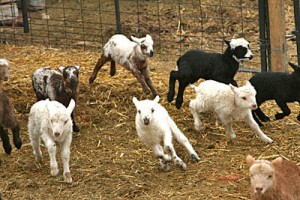
Do you have any requests for another breed of sheep you would like to know more about? Do let me know!
Much love,
Corrie xx
Sources
http://en.wikipedia.org/wiki/Navajo-Churro_sheep
http://www.navajo-churrosheep.com/breeders-id.html
What Would The Weaver Think: Antique Navajo Weaving as Fine Art
http://navajorug.com/navajo-churro-collection/
http://www.ansi.okstate.edu/breeds/sheep/navajochurro/index.htm








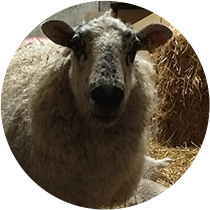
You may be interested in learning more about the Navajo perspective on their sheep. It is different than the Western perspective.